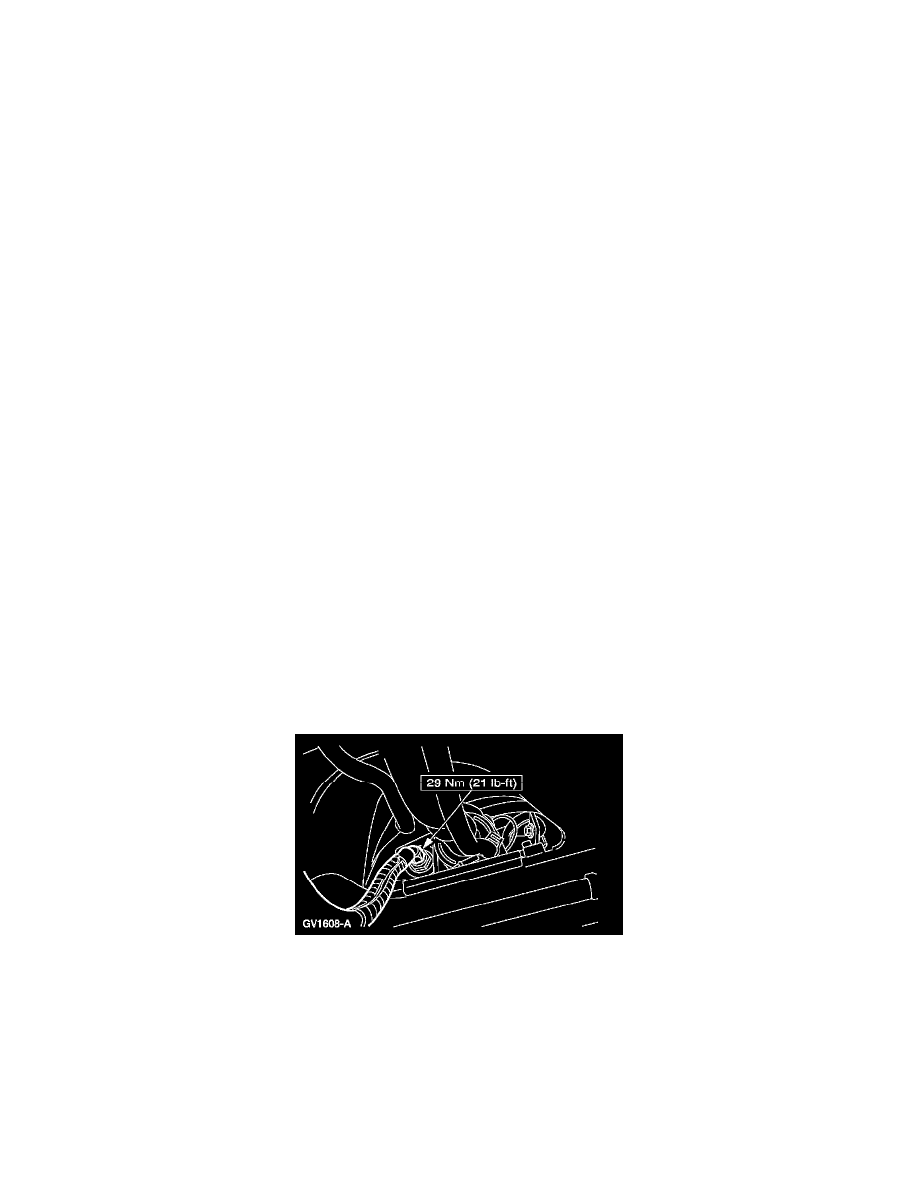F 150 Heritage 4WD Pickup V8-5.4L SOHC VIN Z Bi-fuel (2004)

Fuel Filler Hose: Service and Repair
Bi-Fuel Models
With LPG
FILLER VALVE
REMOVAL
WARNING:
-
Avoid inhaling propane gas or occupying confined areas containing propane. Propane is heavier than air. The heavier gas can displace or
push fresh air out of an area. In large quantities, propane can displace enough oxygen to make the surrounding air unfit to breathe and
possibly cause illness. If a person breathes propane gas or air that lacks oxygen due to the presence of propane gas, headache, dizziness,
and weakness in the extremities can occur. In severe cases, prolonged breathing of propane-fouled air can cause suffocation. In the event
of illness from inhaling propane gas, move the victim immediately to fresh air and contact a physician or medical emergency personnel
for artificial respiration or other required treatment.
-
Do not needlessly vent propane fuel during service, and do not open the 80% stop-fill valve while a vehicle is inside a building. When
servicing the fuel system, follow the recommended procedures to shut off the fuel tanks and run the engine out of fuel before
disconnecting the fuel system components. If the fuel tank(s) are being serviced, have the fuel evacuated by trained personnel at a local
propane fuel station. Liquid propane fuel vaporizes at normal barometric pressure at temperatures above -42°C (-44°F), and expands to
270 times its volume as a liquid. Unnecessary venting of propane fuel can create fire and health hazards which could cause personal
injury or death.
-
Be alert for situations that may cause the propane fuel system to vent fuel. These include extremely hot days, parking near a space heater,
or hoisting a vehicle up near a ceiling heater. Release of propane fuel in a confined area through the pressure relief valve could occur.
The release of propane fuel in a confined area could result in an accumulation of flammable vapors. If fuel is vented near a heat source, a
fire or explosion could occur.
-
Do not use paint drying ovens for propane fueled vehicles. The heat of paint drying ovens will increase the pressure in the fuel tanks. This
could cause venting of propane fuel vapor into the oven and result in a fire from the heat or sparks in the electrical equipment. If the fuel
is confined inside an oven an explosion may occur. When refinishing the body panels of a propane fueled vehicle use spot painting and
drying methods.
-
If a confined area, such as a lubrication pit, has been subjected to propane gas the area should be inspected for adequate oxygen levels by
a local health department before being entered or personal injury or death may occur.
-
The fuel system pressure must be relieved before any component can be removed. The fuel tanks must be evacuated prior to tank
removal. Removal of components without pressure relief or tank evacuation can cause propane fuel to escape into the air and cause
injury or death.
NOTE: In high ambient temperatures, such as those experienced in desert locations, the fuel system is designed to vent excess fuel vapor pressure.
The pressure relief valve will vent fuel and automatically reset itself.
1. Relieve the liquid propane gas fuel system pressure.
2. NOTE:
-
Use only new approved O-rings upon installation.
-
Lubricate the O-ring seals with Super Premium SAE 5W30 Motor Oil or equivalent meeting Ford specification WSS-M2C153-G.
Disconnect the fuel line.
